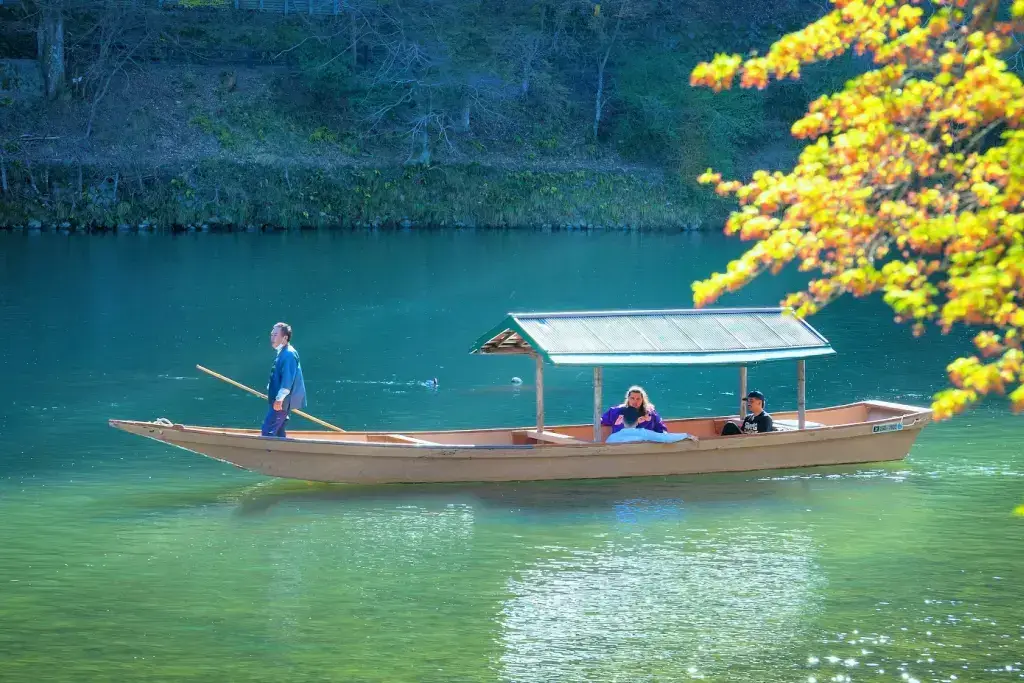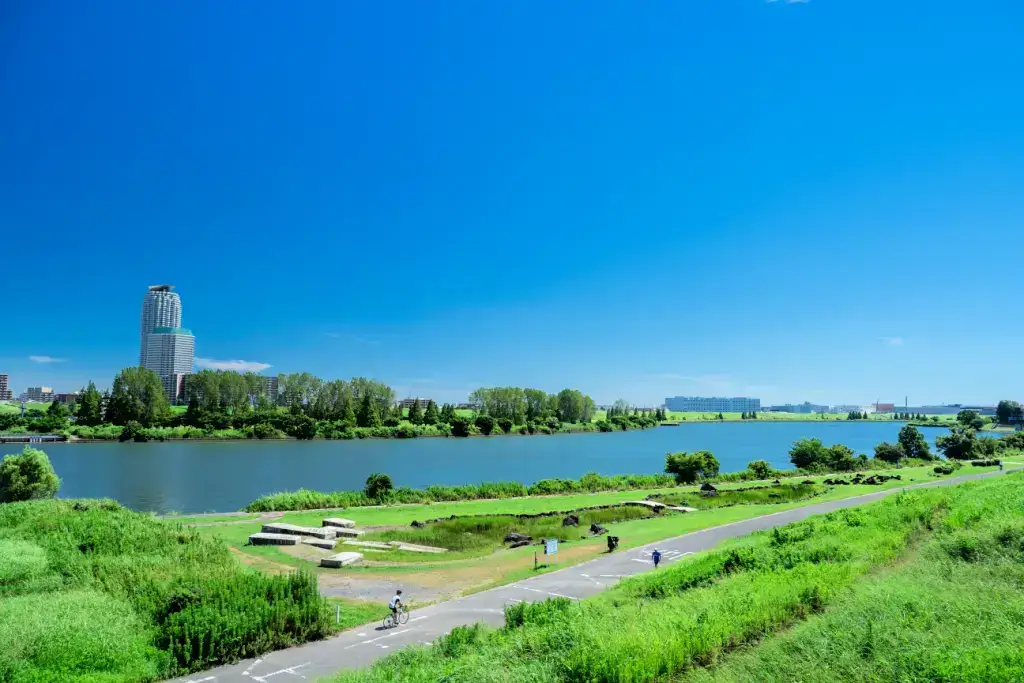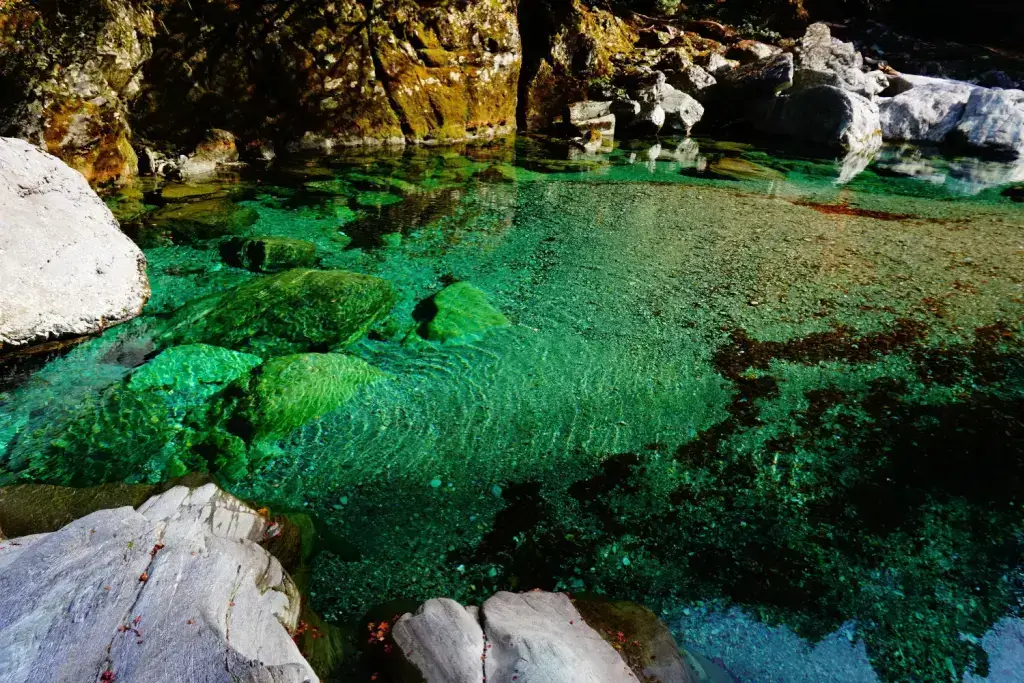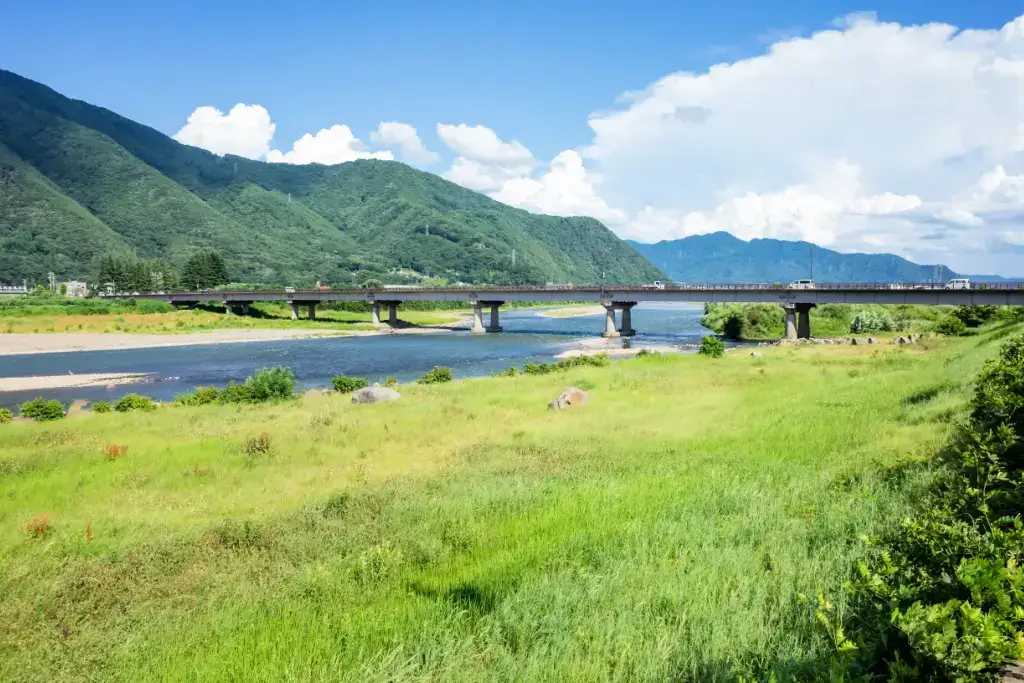Japan has approximately 35,000 rivers. Most start from mountainous areas, flow through farmland, and eventually reach the sea. Due to the country’s narrow and mountainous terrain, these rivers are relatively short, flow quickly, and have significant gradients. However, they also offer magnificent scenery and hold high historical and cultural value for Japan. Let’s explore five must-visit Japanese rivers, starting with the Katsura!
Table of Contents
ToggleKatsura (Kyoto Prefecture)
The Katsura is formed by two other rivers, Hozu and Ōi. Along its path, the river passes through lush agricultural fields. It’s also home to some of Kyoto’s oldest shrines, including Matsuo Shrine. A boat ride is one of the best ways to enjoy the Katsura River. These boat tours are a hit among visitors and provide a unique way to experience the river. Boatmen skillfully steer with long bamboo poles, making you feel like you’ve traveled back in time. Also, the riverbanks are a favorite place for barbecues and picnics, with lots of benches and picnic tables for people to sit, eat, and enjoy the view

Every year, spring cherry blossoms and autumn leaves make the scenery along the river incredibly stunning. Additionally, Katsura is also famous for its summer activities. One exclusive tradition is Ukai, a fishing method that’s over 1,300 years old. In Ukai, you can see how skilled and trained cormorants (an aquatic bird) catch ayu (a Japanese sweetfish).
Arakawa (Saitama Prefecture and Tokyo Metropolis)
Arakawa, also known as the Ara River, is a long river flowing through Saitama Prefecture and Tokyo. It starts at Mount Kobushi in Saitama and ends at Tokyo Bay, covering a distance of 173 kilometers. It’s essential for Tokyo’s water supply, providing about 80% of the city’s tap water. It’s also where the Okubo water purification plant is located.

Throughout history, efforts have been made to manage flooding along the Arakawa River. One significant flood in 1910 led to the construction of the Arakawa Floodway, a drainage canal that protects central Tokyo from floods.
Today, the river hosts events like the annual fireworks festival, attracting thousands of spectators to enjoy the colorful displays along its banks. By the Arakawa River, there are several parks where visitors can easily experience the blend of natural beauty and urban excitement. One such park is the Arakawa Nishiarai Bridge Green Space, which offers an ideal setting for picnics and relaxation.
Are you looking for some amazing snacks while enjoying Japan’s beautiful rivers? Check out Sakuraco! Sakuraco delivers traditional Japanese snacks, teas, sweets, and snacks from local Japanese makers directly to your door so you can enjoy the latest treats from Japan!
Niyodo (Kochi Prefecture)
This is one of Shikoku’s three major rivers alongside the Shimanto and Yoshino. It originates in the central mountains in Ehime as the Omogo River. Known for its purity, the Niyodo boasts crystal-clear water that gives it a dazzling turquoise-blue hue. This mystical color comes from the rocky ground of Mount Ishizuchi, where Niyodo starts. The locals also work hard to preserve its pristine condition, ensuring its natural charm remains intact. Additionally, the rocks filter out dirt, making the water clear and see-through.

One distinctive feature of Niyodo is Chinkabashi. These flat concrete bridges sit at the same level as the bank and go completely underwater when the river floods. Next to the river, tranquil roads are great for bike rides. Not to mention facilities like Qraud, visitors can rent bicycles, canoes, or rafts for a leisurely trip down the waterway. Besides, numerous riverside restaurants offer delicious local cuisine and sake for a delightful dining treat.
Shinano (Nagano Prefecture)
Shinano, also called the “Chikuma River,” is recognized as Japan’s longest and widest river and the third largest by basin area. Famous for its vastness, Shinano plays a crucial role in the region’s geography and ecology, shaping landscapes and providing habitats for diverse plant and animal life. Furthermore, it also has supported transportation and trade activities for centuries. It also served as a critical route for goods and people, connecting various ports and settlements along its path. Notably, this spot witnessed significant battles during the Sengoku Period (1467-1615), adding to its rich history.

Generally, the surrounding landscape is characterized by peaceful countryside and picturesque mountains. Here, you can do fun water activities such as rafting, canoeing, and stand-up paddling, or just take a peaceful walk along the pretty banks. Plus, in the summer, there are many exciting shops called “tsukeba hut” along the banks, where you can eat tasty fresh fish.
Kawayu (Wakayama Prefecture)
Kawayu is actually a unique hot spring destination located on the Oto River. The name “Kawayu” combines kawa (river) and yu (hot water). Here, hot spring water rises through the crystal-clear river, forming natural onsen baths in the riverbed. This special place offers a variety of activities and attractions, making it a fun and exciting spot to visit.

One of the most incredible things is that you can dig your hot spring bath by digging a hole in the gravel riverbed and mixing in cold water to get the perfect temperature. From December to February, the beloved Sennin-buro River bath opens in winter. This giant bath is large enough for a thousand people. The water is naturally heated to about 40°C (104°F), perfect for a warm soak on a chilly day.
On its north side, accommodations are available, including hotels, ryokans (Japanese-style inns), and minshukus (family-run guesthouses). Meanwhile, the south side has a lush forested mountainside, providing a breathtaking backdrop.
Why should I visit beautiful rivers in Japan like the Katsura?
You should visit these rivers because they showcase natural beauty, rich history, and cultural experiences. Whether enjoying a serene boat ride, witnessing ancient fishing traditions, or soaking in natural hot springs, Japan’s rivers provide unforgettable moments. They also truly showcase the stunning landscapes and diverse activities that make Japan’s waterway unique. So, where would you most like to explore? Share your thoughts below!










